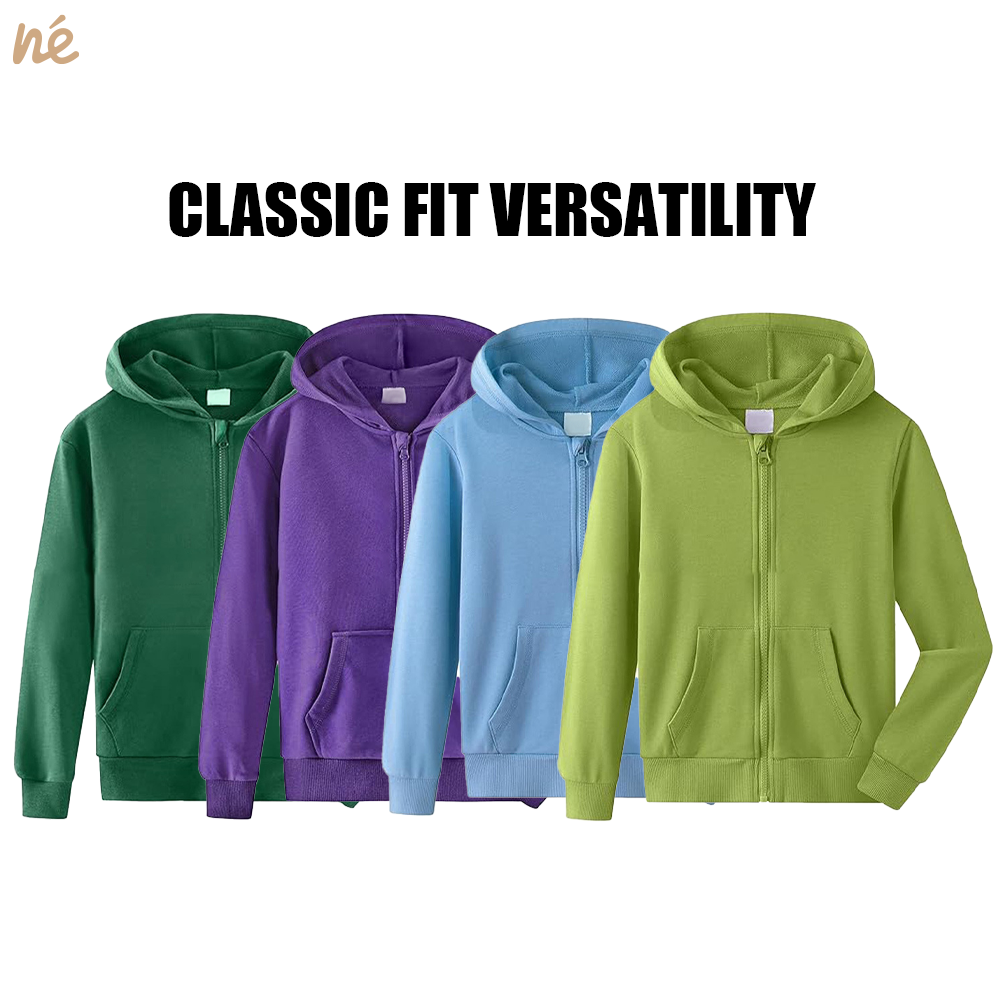Understanding the Impact of Fabric Selection on Hoodie Quality
Selecting the right fabric for a hoodie can make the difference between a wardrobe staple you'll treasure for years and a garment that loses its appeal after just a few washes. The world of hoodie fabrics extends far beyond basic cotton, encompassing innovative blends and performance materials that each bring unique characteristics to this beloved casual garment. Whether you're seeking comfort for lounging at home or durability for outdoor activities, understanding hoodie fabrics is essential for making an informed purchase decision.
Essential Hoodie Fabric Types
Cotton-Based Materials
Pure cotton hoodies offer unmatched breathability and natural comfort. The most popular varieties include jersey cotton, known for its lightweight feel and excellent drape, and French terry cotton, which features loops on one side for enhanced moisture absorption. Premium cotton hoodies often utilize combed cotton, where the fibers are aligned and refined for superior softness.
When shopping for cotton hoodies, pay attention to the weight measurement, typically expressed in GSM (grams per square meter). Lightweight options range from 150-200 GSM, perfect for spring and summer wear, while heavier weights of 300-400 GSM provide substantial warmth for colder seasons.
Synthetic and Performance Fabrics
Modern hoodie fabrics incorporate various synthetic materials to enhance performance and durability. Polyester-based hoodies excel in moisture-wicking properties, making them ideal for athletic activities. These synthetic hoodie fabrics maintain their shape better than pure cotton and often feature advanced treatments for odor resistance and UV protection.
Technical blends might include materials like nylon for added durability or spandex for stretch. These performance-oriented hoodie fabrics typically dry faster than natural materials and resist wrinkles more effectively, though they may not match cotton's natural breathability.

Fabric Blends and Their Benefits
Cotton-Polyester Combinations
The most common hoodie fabrics blend cotton with polyester, offering a balance of comfort and practicality. A typical ratio might be 80/20 or 60/40 cotton-to-polyester, providing the soft feel of natural fibers with enhanced durability and wrinkle resistance. These blended hoodie fabrics also tend to be more budget-friendly while maintaining good quality standards.
Higher polyester content generally means better color retention and shape maintenance, while higher cotton content provides more breathability and a more premium feel against the skin. Consider your priorities when choosing between different blend ratios.
Premium Fabric Innovations
Luxury hoodie fabrics often incorporate specialized materials like modal, bamboo viscose, or organic cotton. These premium options offer exceptional softness and environmental benefits. Modal, derived from beech trees, creates incredibly soft hoodies with excellent drape and color retention. Bamboo-based fabrics provide natural antimicrobial properties and superior moisture management.
Some innovative hoodie fabrics also feature temperature-regulating properties or sustainable materials like recycled polyester. While these options typically come at a higher price point, they often deliver superior comfort and longevity.
Seasonal Considerations for Fabric Selection
Summer and Spring Options
Warm weather calls for lightweight hoodie fabrics that prioritize breathability and moisture management. Look for options like cotton jersey or performance blends with weights under 200 GSM. These lighter materials allow for comfortable layering while preventing overheating. Consider hoodies with UV-protective properties for outdoor activities.
Mesh-lined hoodies or those featuring strategic ventilation panels can provide additional cooling benefits. Some summer-weight hoodie fabrics also incorporate quick-dry technology, perfect for active lifestyles or humid conditions.
Fall and Winter Choices
Cold weather demands hoodie fabrics with superior insulation properties. Heavyweight cotton blends, especially those with brushed interiors, provide excellent warmth retention. Fleece-lined options, typically made from polyester or cotton-poly blends, offer exceptional coziness without excessive bulk.
Consider double-layer hoodie fabrics or those with special thermal properties for maximum warmth. Some winter-weight options feature windproof or water-resistant treatments while maintaining breathability.
Care Considerations by Fabric Type
Washing and Maintenance
Different hoodie fabrics require specific care approaches to maintain their quality. Cotton-based hoodies generally tolerate regular washing but may shrink if exposed to high heat. Synthetic materials are typically more resilient but might retain odors if not washed properly. Always check the care label for specific instructions based on the fabric blend.
To extend the life of your hoodie fabrics, consider washing in cold water and air drying when possible. This helps prevent shrinkage and maintains the integrity of special treatments or finishes.
Long-term Durability Factors
The longevity of hoodie fabrics depends largely on both material quality and care practices. Natural fibers may show wear more quickly but often age gracefully, while synthetic materials maintain their appearance longer but might deteriorate suddenly. Pay attention to the weight and construction quality when assessing potential durability.
Consider the intended use when evaluating fabric durability claims. Athletic activities may require more durable synthetic blends, while casual wear might benefit from the comfort of natural fibers despite slightly lower durability.
Frequently Asked Questions
What is the best fabric for everyday hoodie wear?
For everyday wear, a cotton-polyester blend (around 80/20 ratio) offers an ideal balance of comfort, durability, and easy care. This combination provides the soft feel of cotton while benefiting from polyester's strength and shape retention properties.
How can I prevent my hoodie from pilling?
To minimize pilling, choose tighter-knit hoodie fabrics and wash them inside out on a gentle cycle. Avoid putting hoodies in the dryer when possible, and consider fabric types with anti-pilling treatments or higher-quality long-staple cotton blends.
Are organic cotton hoodies worth the higher price?
Organic cotton hoodies often justify their premium price through superior softness, reduced environmental impact, and fewer chemical treatments. They typically offer better breathability and may be gentler on sensitive skin, though they require careful maintenance to maintain their quality.
How do I choose the right fabric weight for my climate?
For warm climates, select lightweight hoodie fabrics (150-200 GSM) with good breathability. In cooler regions, opt for medium to heavyweight options (300-400 GSM). Consider your activity level and layering needs when making the final decision.



